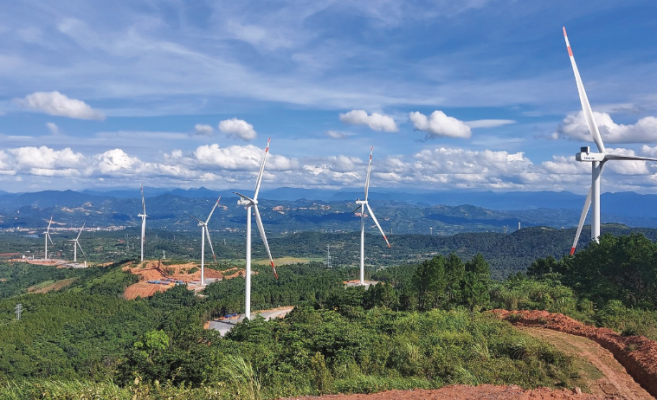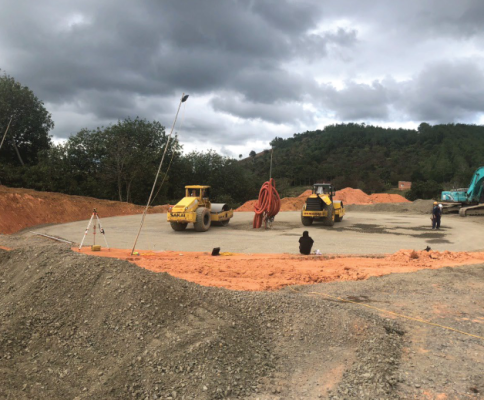Studies have shown that Vietnam has the greatest wind energy potential in Southeast Asia, thanks to its geographical advantages, a coastline of over 3,000 kilometers, and a subtropical monsoon climate. This immense wind energy potential has led to a rise in the number of wind farms in Vietnam, making the design of wind turbine foundations more crucial than ever. The foundation is the bottommost part of the wind power structure, providing the base and support for the tower and turbine above.
This poses a significant challenge for construction units tasked with building turbine foundations, as they must develop solutions and apply suitable technologies for each project to ensure progress, technical precision, and project efficiency.
What Role Does the Construction Unit Play in the Initial Stages of the Project?

Ensuring the Stability and Safety of Wind Turbines
Wind turbines are typically tall and must withstand strong wind loads, so the foundation must be constructed solidly to ensure the safety and stability of the entire structure. Properly designed and constructed foundations help prevent the risk of turbine overturning or collapse, especially in harsh weather conditions.
Optimizing Turbine Performance
A stable foundation helps minimize oscillations and vibrations during the turbine’s operation. This not only increases the efficiency of converting wind energy into electricity but also reduces the wear and tear on mechanical components, thereby extending the turbine’s lifespan and reducing maintenance costs.
Adapting to Diverse Geological Conditions
Wind power projects are often built on various terrains, from inland areas to offshore locations. Foundation construction needs to be adjusted to suit the specific geological conditions of each site, such as soft soil, rocky terrain, or even deep-sea areas. Selecting the appropriate foundation type and construction method ensures stability and safety for the turbine under all geological conditions.

4. Supporting the Construction and Installation of Turbines
A well-constructed and precise foundation facilitates the turbine installation process. It provides a flat and stable surface for attaching the turbine tower structure, minimizing errors and risks during assembly. This contributes to speeding up construction progress and reducing additional costs.
5. Optimizing Long-term Investment Costs
While foundation construction can account for a significant portion of the total construction cost, it offers long-term cost benefits. A solid and durable foundation helps reduce maintenance, repair, and replacement costs throughout the wind power project’s lifecycle. Furthermore, it helps maintain the turbine’s operational performance at an optimal level, thus increasing the profitability of electricity production.
6. Đua Fat – A Pioneering Unit in Wind Turbine Foundation Construction
As an experienced company in onshore wind turbine foundation construction, Đua Fat Group Joint Stock Company has made significant contributions to the success of leading wind power projects in Vietnam, such as the Tan Linh Wind Power Plant, Huong Tan Wind Power Plant, and EA Nam Wind Power Plant.

In the context of the growing demand for renewable energy, onshore wind power projects are emerging as a leading solution to provide clean and sustainable energy. Foundation construction for onshore wind power projects is a key factor determining the stability, safety, and operational efficiency of the entire project. In this field, Đua Fat has asserted itself as a potential unit with outstanding capability and experience.
With strong financial capacity and extensive experience, Đua Fat has the resources to invest in technology, equipment, and human resources. This enables the company to maintain strong construction capabilities, meeting the requirements of large-scale and complex wind power projects, thereby promoting the development of the renewable energy industry and providing clean and sustainable energy for the future.
Ban truyền thông!


 VN
VN CN
CN KR
KR JP
JP